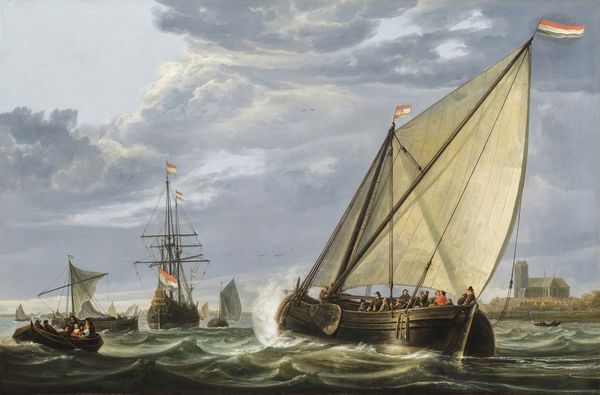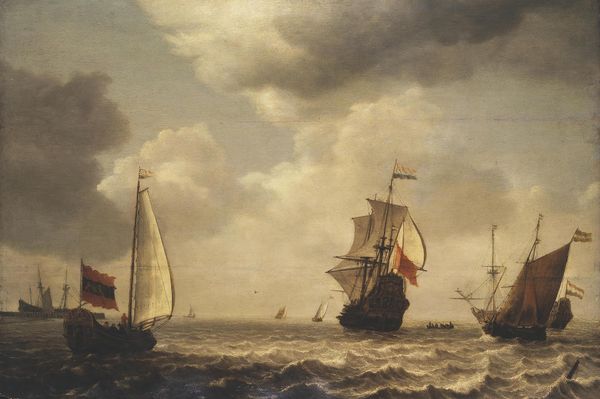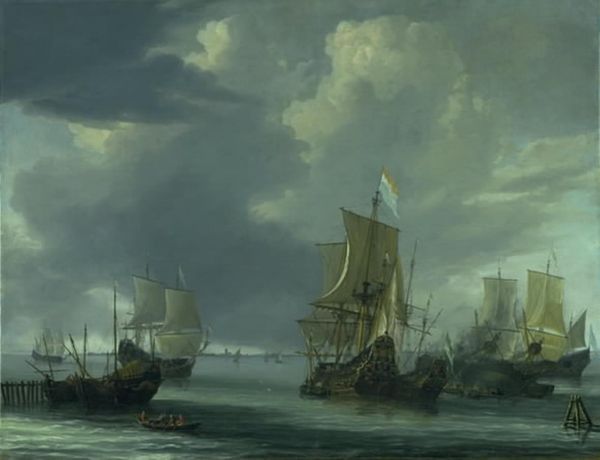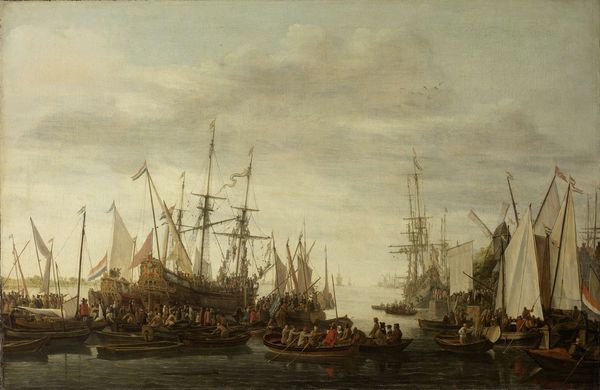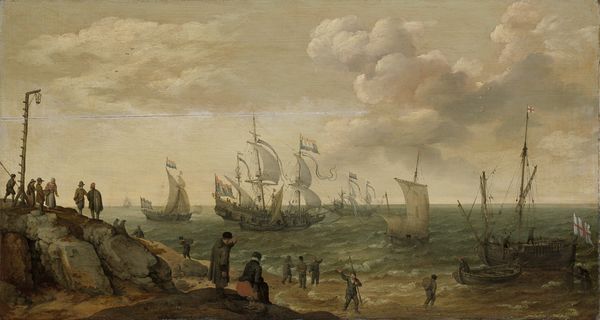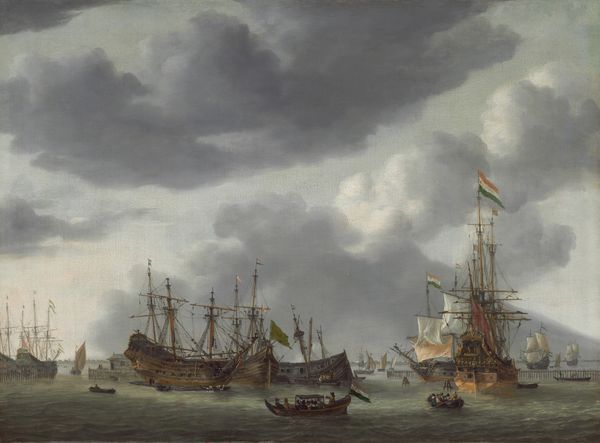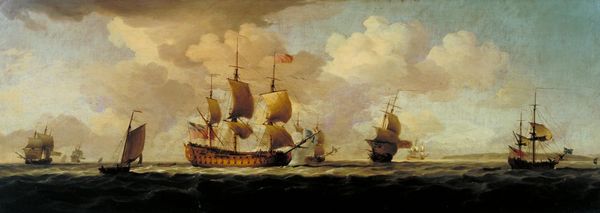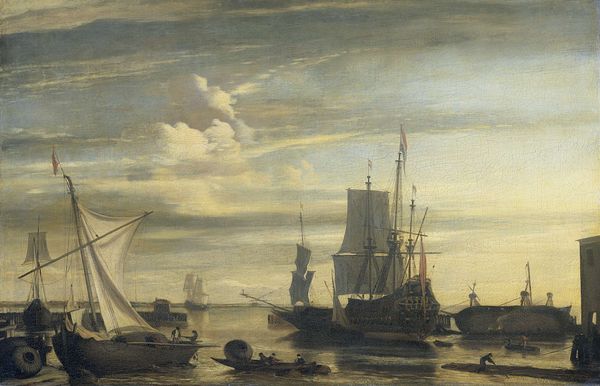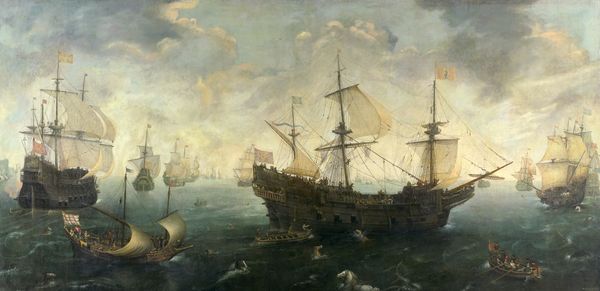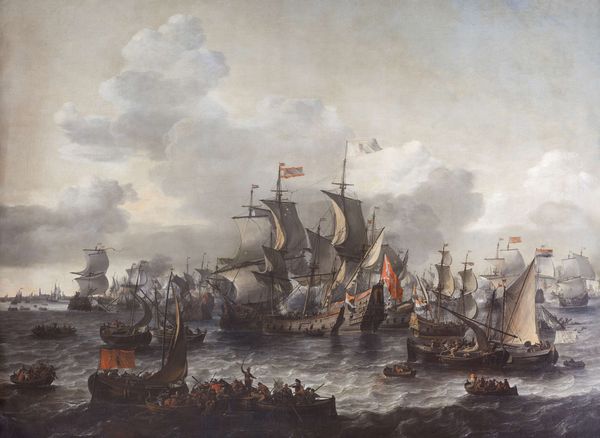
painting, oil-paint
#
baroque
#
dutch-golden-age
#
painting
#
oil-paint
#
landscape
#
cityscape
#
history-painting
#
realism
Dimensions: height 68.0 cm, width 103.5 cm, depth 7 cm
Copyright: Rijks Museum: Open Domain
Editor: We are looking at "The Arrival of the Royal Charles," painted by Jeronymus van Diest II in 1667, using oil on canvas. It's striking how much space is dedicated to the sky, dwarfing the ships. What statement do you think van Diest was trying to make here? Curator: That’s an excellent observation! I would suggest considering the complex politics at play during the Anglo-Dutch wars. Van Diest's painting freezes a moment of Dutch triumph, the daring raid on the Medway, where the Royal Charles, a prized English warship, was seized. What does it mean to capture and display the flag of your oppressor? Editor: So it's not just a seascape, but a powerful symbol of Dutch power? I see the captured ship with Dutch flags flying. But what about that piece of paper on the bottom left corner of the work? Curator: Exactly. And the document? That’s likely a symbolic detail meant to record, and perhaps justify, the event for posterity. Ask yourself: whose narrative is being prioritized here, and at whose expense? The Dutch victory is inscribed, literally, within the canvas. It's crucial to question the glorification of such events, and to think about how that might serve to erase English experiences of defeat and loss, particularly in light of ongoing colonial tensions and conflicts. Editor: I hadn't considered that. So the beauty of the painting is almost a distraction from its political message about cultural dominance? Curator: Precisely. It compels us to unpack the intersection of aesthetics and power. By appreciating van Diest's skill, but also critically engaging with the historical context, we see how art can be both a celebration and a subtle act of cultural assertion. Editor: Thank you; that gave me a completely new perspective! It's about far more than just boats and water! Curator: Indeed. Hopefully, it prompts us to consider whose stories get told and whose get left out of the frame.
Comments
rijksmuseum about 2 years ago
⋮
The Royal Charles was the most powerful warship in the English fleet. The Dutch captured the vessel during the raid on the naval base at Chatham in June 1667 and moved it to the Dutch port of Hellevoetsluis. The English ship’s flag is lowered to signify its surrender. The ship’s ornamentally carved counter is on display in this gallery.
Join the conversation
Join millions of artists and users on Artera today and experience the ultimate creative platform.



